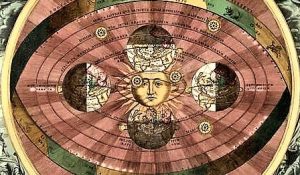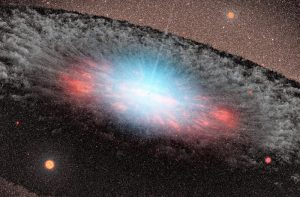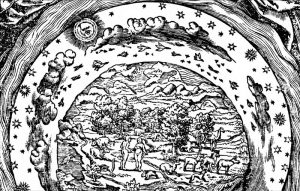String theory
We live in a complex universe in which we seek to understand nature. The constant questions about our origin and about the world' s composition have led scientists to make great progress in finding answers, and among the theories that have emerged, string theory is one of the most ingenious. String theory is one of the most brilliant, controversial and unproven ideas in physics. In recent decades, string theory has been the most promising theory to explain a microscopic theory of gravity and attempts to provide a complete, unified and consistent description of the fundamental structure of our universe. It is also known as the Whole theory.

Related topics
Dark energy, dark matter, stationary theory, inflation theory, oscillating universe theory
What is string theory?
String theory is the one that gives us the most expectations in terms of unifying the great elements that make up nature: electromagnetism, strong nuclear force, weak nuclear force and gravity. It basically unites quantum physics and relativity.
String theory explained
Matter is composed of atoms, and these are formed by three basic components: electrons that revolve around a nucleus composed of neutrons and protons. The electron is a fundamental particle and neutrons and protons are made up of smaller particles, known as quarks. What we know about the subatomic composition of the universe is summarized in the Standard Model of particle physics. There are four different fundamental forces in the universe: gravity, electromagnetism, and weak and strong nuclear forces.
Each of them is produced by fundamental particles that act by carrying force. The most common of these is the photon, a light particle, which is the mediator of electromagnetic forces. The Graviton is the particle associated with gravity. The strong force is carried by eight particles known as Gluons. Finally, the weak force is transmitted by three particles, W +, W- and Z. The behavior of all these particles and forces is described in the Standard Model, with one notable exception: gravity.
For technical reasons, the gravitational force, the most familiar in our daily lives, has proven to be very difficult to describe microscopically. This has been for many years one of the most important problems of theoretical physics: formulating a quantum theory of gravity. In recent decades, string theory has become the most promising theory to explain gravity by attempting to provide a complete, detailed and consistent description of the fundamental structure of our universe.
String theory tells us that small parts of the universe are energy filaments and that they can vibrate, producing with each vibration a different type of particles with different qualities. These strings are smaller than a quark so they cannot be seen.
Who proposed string theory?
String theory was first proposed by Jöel Scherk and John Henry Schwarz, who in 1974 published an article demonstrating the theory based on one-dimensional objects or strings rather than punctual particles that could describe gravitational force.
Background
- Its origin comes from Einstein’s equations.
- It arose from an accidental discovery by Veneziano.
- The improved version of the theory was written by Emil Marticec, Jeffrey Harvey and Ryan Rohm.
History of the string theory
In 1968, physicist Gabriele Veneziano was looking to find a logical meaning for nuclear force. Veneziano had been working on this problem for a long time, until he realized that an esoteric formula invented two centuries earlier for mathematical purposes, Euler’s beta function, seemed to fit the description of numerous properties of strongly interacting particles.
In 1970 Yoichiro Nambu, Holger Nielsen and Leonard Susskind revealed the physical principles, previously unknown, that were hidden behind Euler’s formula. They demonstrated that, if a model of elementary particles was constructed by viewing them as small one-dimensional vibrating cords, their nuclear interactions could be accurately described by Euler’s function. According to them, if the string pieces were small enough, they might still look like point particles and therefore, could be consistent with experimental observations.
In 1984, Green and Schwarz demonstrated how to resolve the quantum conflict of string theory and demonstrated that the theory could encompass all four forces and all kinds of matter.
What problems does it have?
One of the problems is that the theory needed the existence of a multidimensional space, and our Universe has four dimensions, and the second big problem, it confronts was that it only worked for some types of particles and not for all of them, only for the so-called bosons; and in this way it left out all quarks, electrons and other particles.
How to cite this article?
Briceño V., Gabriela. (2019). String theory. Recovered on 24 February, 2024, de Euston96: https://www.euston96.com/en/string-theory/









